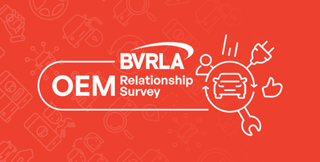Driver education and communication are crucial if fleets are to avoid costly end-of-contract charges.
That’s the message from some of the country’s biggest leasing companies, after a Fleet News online poll revealed less than half of fleets (45.8%) budget for possible penalties.
It means the majority could be facing a nasty surprise. Payments can run into hundreds of pounds per vehicle and end-of-contract charges added £45 million to fleet budgets in 2012, according to the FN50 survey of the UK’s top 50 contract hire and leasing companies.
Incomplete MOTs, illegal tyres, missing keys and logbooks are some of the most common charge points, with leasing experts warning it is critical the recharge process is clearly defined to both fleets and their drivers.
Maintain regular dialogue
Andrew Hogsden, senior manager within the strategic fleet consultancy team at Lex Autolease, said: “Communication and driver education are the best strategies to help mitigate end-of-contract charges.
“By maintaining a regular dialogue with customers, damage and potential excess mileage can be flagged up and provides the opportunity to make repairs or amend contracts.”
Fleets that take a proactive approach have reaped the rewards. William Hill introduced ad hoc visits from BCA inspectors, who select a random sample of vehicles each month. If a car is found with damage, its driver has to pay a penalty. The move has reduced end-of-contract damage charges by 38%.
Nick Saunders, Arval head of remarketing, told Fleet News that, at the point of leasing a vehicle, “it’s important to have a clear view of what is acceptable wear and tear and what isn’t”.
Arval, like many other leasing companies, uses the BVRLA Fair Wear and Tear standard. “An awareness of this standard for businesses and its drivers will allow them to manage and mitigate end-of-contract costs,” said Saunders.
“It is essential to communicate with drivers to reduce the risk of charges and remove ambiguity surrounding the company policy.”
Penalise drivers for damage
Clarifying driver responsibilities and impact on the business can make a difference. It’s an approach which can be backed up with the option of financially penalising drivers for missing items and unnecessary vehicle damage.
Tracey Scarr, CSR manager at Arval, said: “Part of our approach is to make drivers accountable for the care of their vehicle. We give them lots of support to do this, but do reserve the right to charge drivers for damage caused through neglect.”
Importantly, Scarr manages the condition throughout the vehicle’s time on fleet, not just at the end of the contract.
She added: “We encourage employees to flag all incidents and take a transparent approach to vehicle care.”
Roddy Graham, commercial director at Leasedrive, believes it is essential for fleets to keep a close eye on the condition of their vehicles. He said: “The only potential surprise comes when an employee has abused a company asset, which has gone unnoticed until their company car becomes due for collection.
“We recommend regular checks and to make all company car drivers and users of pool and short-term rental vehicles aware of their responsibilities with regard to due care of company and third-party assets.”
Leasing companies have recognised they have a role to play in helping fleets prepare for end-of-contract charges and many offer driver education about acceptable damage, as well as providing the option for vehicle inspections prior to contract expiry.
Taking an innovative approach to driver education is also proving successful for leasing companies.
For example, LeasePlan has given drivers access to a video demonstrating the required standards. Julia Thirtle-Watts, general manager, remarketing operations at LeasePlan, said: “The release of easy-to-understand videos, which allow drivers to view footage on a smartphone while appraising their own vehicle for fair wear and tear, is proving to be incredibly effective.”
But quick wins can be achieved by companies taking simple steps to avoid charges by being proactive in the weeks leading up to the return of the vehicle, suggests Saunders.
“For example, ensuring that, at the point of vehicle return, things like the spare key, the service book, vehicle manual and satellite navigation discs are available and given back,” he said.
“These are very basic things but can save the business money nonetheless.”




















Login to comment
Comments
No comments have been made yet.